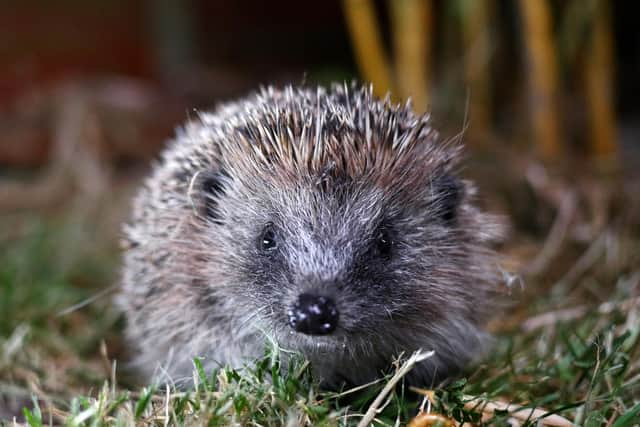How artificial intelligence is helping hedgehogs
Who would ever have guessed that counting hedgehogs could be such a technical affair?
Thanks to scientific advancements, artificial intelligence (AI) is now involved with academics saying it will help in the drive to conserve more of these spinu mammals.
Advertisement
Hide AdAdvertisement
Hide AdIt goes by the grandiose title the National Hedgehog Monitoring Programme and it uses sophisticated, cutting-edge AI technology to help hedgehogs.


For the first time the results will provide robust estimates of hedgehog numbers in different parts of the country, how these are changing year on year, and in time, a national estimate.
Volunteers across the UK are needed to identify images of hedgehogs – and other wildlife – online as part of the project, and can do so from the comfort of their own home.
The results will give crucial insights into what’s causing hedgehog populations to decline so rapidly (between 30 and 75 per cent in rural areas since 2000). Once this is understood, practical conservation measures can be implemented.
Advertisement
Hide AdAdvertisement
Hide AdLed by wildlife charities The British Hedgehog Preservation Society (BHPS) and People’s Trust for Endangered Species (PTES), in partnership with Nottingham Trent University, ZSL’s London HogWatch, Durham University and MammalWeb, and largely funded by Natural England, this unique combination of AI, trail cameras and home-based volunteers will produce crucial insights into the factors causing hedgehog populations to plummet, and enable conservationists to implement practical conservation measures to try to reverse the decline.
The NHMP uses trail cameras to capture images of hedgehogs and other wildlife in different habitats, including urban parks, gardens, woodlands and farmland. AI algorithms sort all the images captured, minimising the numbers of blank or human images, and maximizing the number of animal images for home-based volunteers – known as "spotters” – to identify.
The algorithms have been developed by Conservation AI, machine learning specialists based at Liverpool John Moores University.
Volunteers from all corners of the UK are needed to make the project a success and can take part from the comfort of their own homes. Last year trail cameras were placed at 13 different sites across the country, from Dorset to Glasgow. Thirty trail cameras were placed at each site and were left in situ for a month, generating thousands of images. The species in these images need to be identified.
Advertisement
Hide AdAdvertisement
Hide AdThe process is straight-forward: simply look through a sequence of images, tag which species you see, and continue! Free training and ID guides are available online. To find out more and to sign up, visit www.nhmp.co.uk,
Dr Henrietta Pringle, National Hedgehog Monitoring Programme Coordinator at People’s Trust for Endangered Species, said: “We know hedgehogs are struggling, especially in the countryside, but before we can put practical conservation measures in place we need to understand where they are and why they’re declining.
"This is the first study where populations are measured year after year, in the same location, which will produce vital data and allow us to identify those at risk, which in time will hopefully help us to reverse the decline.”
Comment Guidelines
National World encourages reader discussion on our stories. User feedback, insights and back-and-forth exchanges add a rich layer of context to reporting. Please review our Community Guidelines before commenting.
